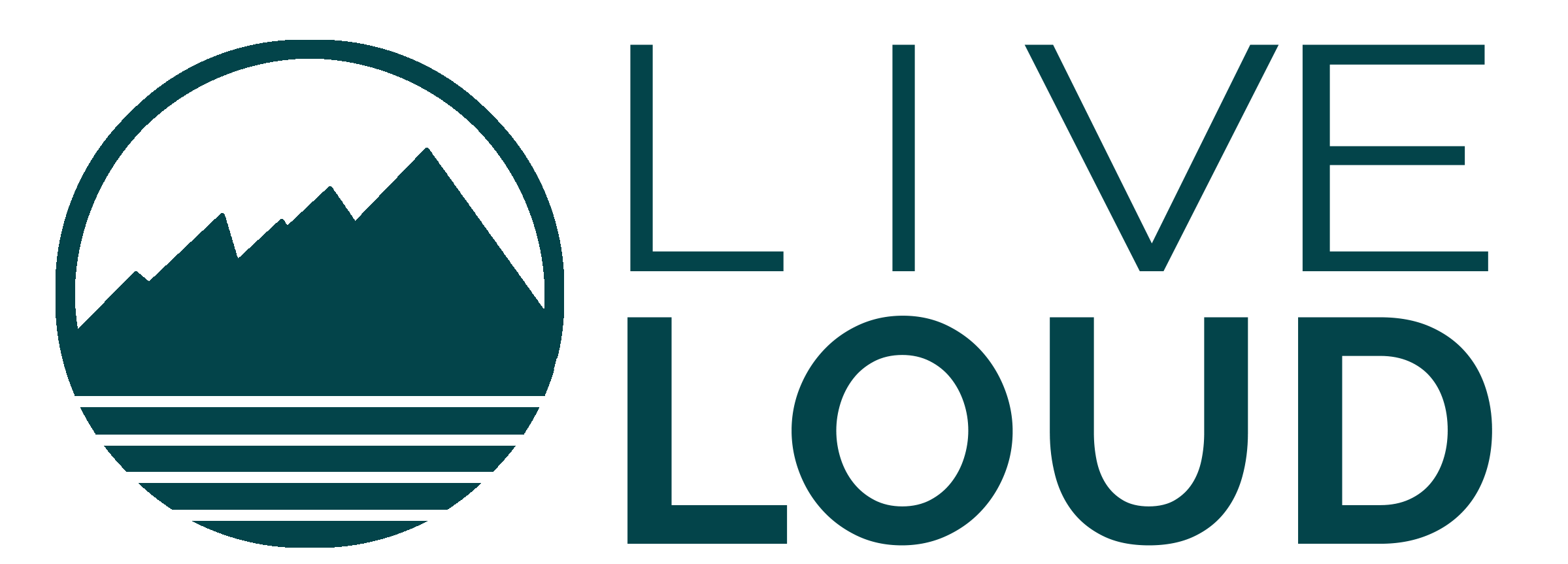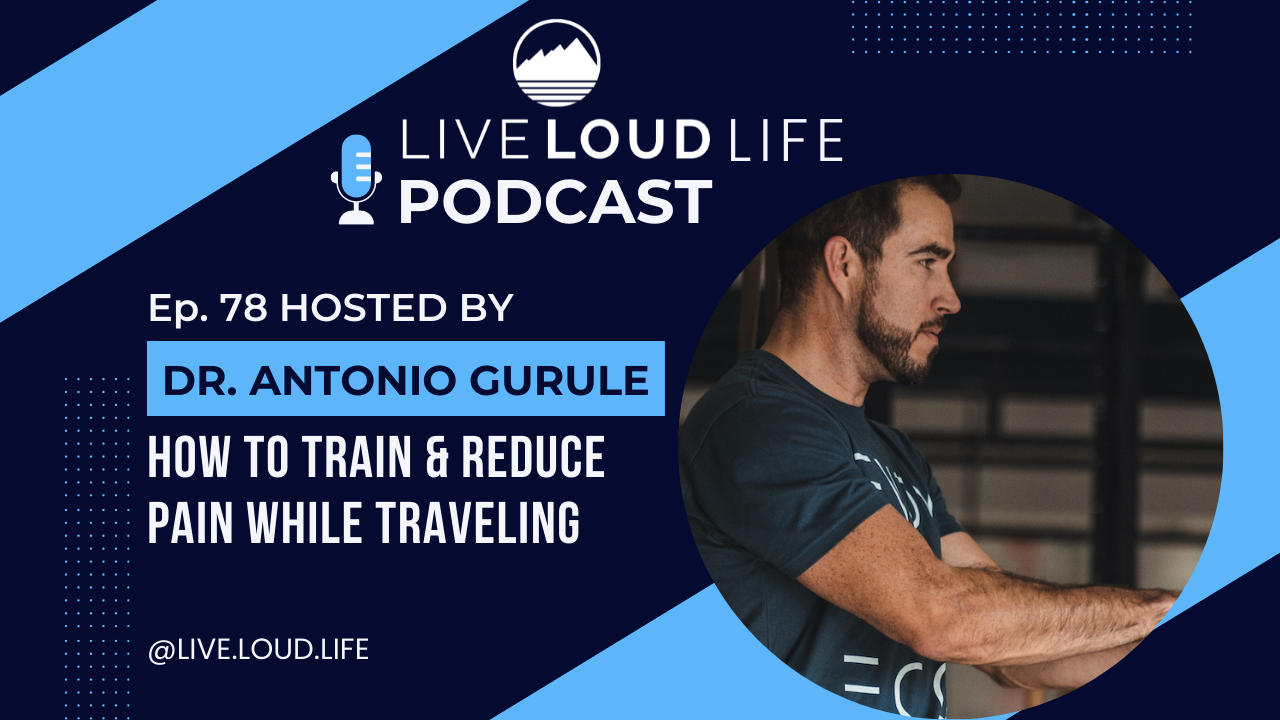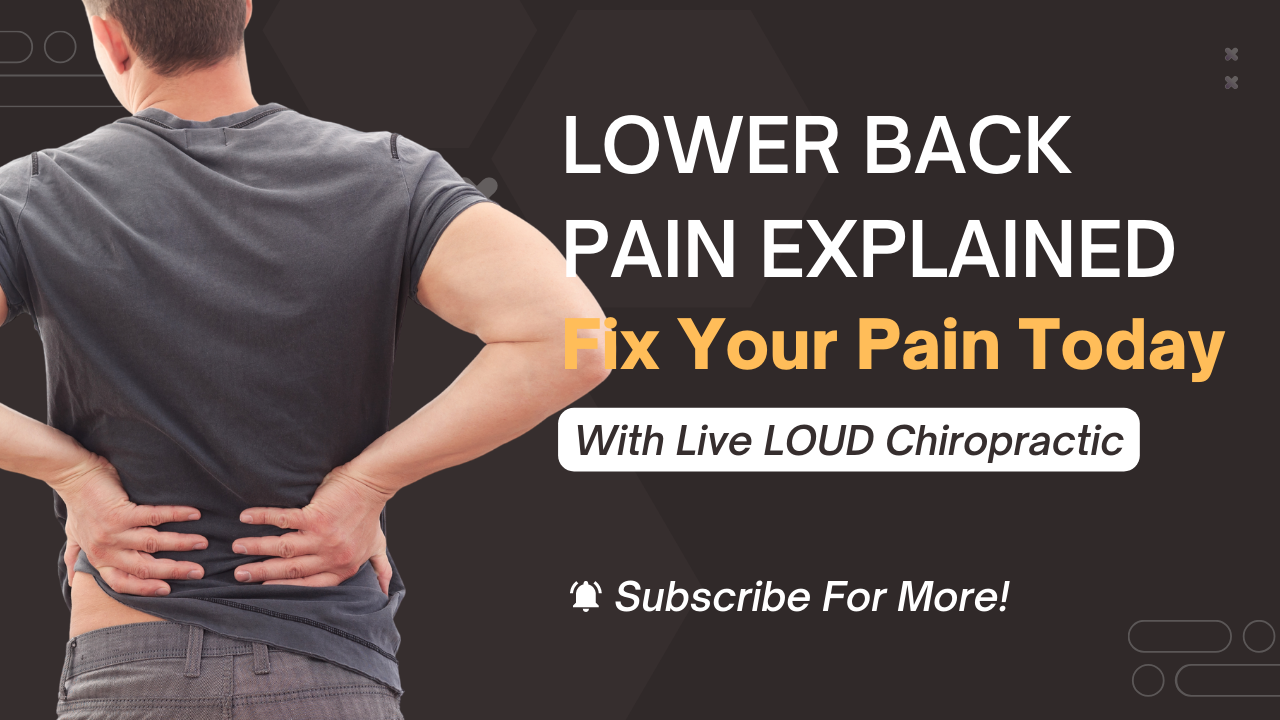Live LOUD Life PodcastLafayette Colorado
Episode 73
The One Question Your Provider Should Be Asking You
With Dr. Antonio Gurule
Sometimes we’re unable to do the things we want because of pain, being out of shape, or simply lacking energy. Therefore, we need help from a professional. With many chiropractors and physiotherapists to choose from, sifting through to find the right one can be difficult.
In this episode, I uncover one way to tell if a chiropractor, physiotherapist, and healthcare provider truly cares about your interest and will get you the results you’re looking for.
Episode Highlights
01:13 – Alarming musculoskeletal pain stats in the US
02:03 – The pain management crisis
06:10 – What’s your motivation for dealing with pain? What do you want to be able to do?
07:44 – My problem with functional improvements and assessments
10:23 – The question your provider must ask
13:00 – One size doesn’t fit all when it comes to achieving your pain treatment goals
14:50 – Trustworthy coaches, personal trainers, physiotherapists, and chiropractors are an investment, not an expense.
About Dr. Antonio Gurule

Background:
- Father
- Doctor of Chiropractic
- Owner of Live LOUD
- Personal Trainer & Health Coach
Check Out Some of Our Other Blog Posts and Podcast Episodes
How to Train & Reduce Pain When Traveling | EP 78
September 21, 2022
by Editor | Live Loud Life Podcast
0 Comments30 Minutes
Antonio 00:00
What’s up guys. Welcome back to another episode of The Live Loud Life podcast. My name is Dr Antonio, your host of The Live Loud Life podcast. happy that you’re here. I’m happy that you’re listening and you’re jiving with our content and our message here.
00:25
What we’re about. If you’re new here, our role is to help guide you to the adventures that you’re made for. Obviously being chiropractors and coaches, we do that through a multitude of different approaches, but we try to meet you where you are. And that’s a little bit of foreshadowing into what we’re talking about today.
00:45
What we have found is families deserve more from their healthcare providers, and we hope that we can fill in the gaps of the message and the questions that you are not getting answers to through the knowledge and expertise that we have. And we do this in a subset of different niches and specialties of which is, primarily prenatal, postnatal, and pediatric care, which is what my wife Dr. Nichelle does. But then outside of that is just musculoskeletal pain. And I heard a stat the other day. This was kind of a reflection off of COVID 2020 and 2021. This is not what we’re referring to, but it started with the mental status of the United States adult. This was just the adult population, not to mention what was happening on with adolescents, teens and, kids is that 40% of them were at an elevated stress level, compared to what they were previously. It just added so much more stress on that.
01:46
But on top of that in, and stress having part a play in that, is at any given point in time, it’s estimated that 35% of us are dealing with some form of musculoskeletal pain. That’s a lot. When you look at the total population of the United States, we’re just talking about United States stats, 35%, a third of you, one out of three, is dealing with some form of musculoskeletal pain.
02:11
Now we know that a lot of this is being mismanaged. i.e., there’s an opioid in pain medication crisis. That’s been what’s going on with fentanyl from just a drug perspective of what’s being prevalent on the streets as well, is there is a crisis around how to manage pain. And most of this is dealt with a numb suppressing sort of approach. In reality, when we have a better understanding of what pain actually is and what’s happening, we can take grasp and form some form of autonomy around our pain.
02:50
Now, there are a subset of cases. I always say this because someone’s like, oh, what about this? What about this? There is obviously a subset of pain that needs a multifactorial approach that might include some form of medication. But as seen this week in particular with three hot low back cases. When we say hot low back cases, this is your typical, I bent over and my back went out situation. I can’t walk. I’m about to go to the hospital to get medication, but I don’t want to.
03:20
It was all dealt with a movement approach, of which we were able to retrieve 50% reduction in pain mitigation with a few basic exercises, explained in a certain context and form to help these individuals get control of their pain in this immediate set so that they can start gaining some momentum in a positive direction rather than going through a negative feedback loop. So what we’re seeing is this approach of not understanding how to actually manage musculoskeletal pain.
03:55
Now, when you’re in this world, as obviously most of the listeners are not, is you see this constant battle of- and this is true in any industry, to be honest, of like how to best approach these. You know, you have one side that thinks this, you have another side that thinks this. Look at just how our nation’s run of just a two-party system, and then the complete opposing views of those and realistically not getting a lot of stuff done in that, but this is not a political show is.
04:25
But that’s what we see. We can’t find a middle ground of understanding that you have to have a patient-centered approach. And that’s what today’s show is. If you feel that you have been, or your case or your musculoskeletal pain or your injuries have been mismanaged, because you got one person saying this, you got another person saying this, you want conservative methods, but you don’t want to take medication, but yet at the same time, they’re not getting you anywhere because you’re self-reliant on not only medication, but maybe physical therapy or chiropractic adjustments. If you feel that your case has been mismanaged, this is the show for you. This is how to manage musculoskeletal pain. And this is through one question and one question alone.
05:07
Now this is a ‘who’ not ‘how’ question. Meaning, this doesn’t necessarily tell you the how; this just indicates the appropriate question to determine if you have the right provider who will provide you, who will be the ‘who’ for you providing the how, the means, so on and so forth.
05:29
And this is a question that we’ve heard in multiple different areas from multiple different people in one way or another. Some have obviously coined the term to be theirs, but it’s something that’s been around coaching and marketing and advertising. Realistically, this comes down to the trust factor and the trust factor is whether you as the client, patient, or member trust the individual.
05:56
And if the individual is asking this question and they’ve gained your trust, then you know you’re on the right path. But the question sheds light to the underground or the underlying truth message or goals that you’re trying to accomplish. So it’s really more about you as the client and patient as a self-reflection, but it’s hard to know that if you’re not being asked the question.
06:30
A thought process is important because when you’re dealing with musculoskeletal pain, if asked incorrectly, the answer is, well, I just want my pain down. Well, why is that important? This has been asked, like the five whys. You just keep asking why, you keep asking why until they finally break down and cry because they know the real answer.
06:58
I’m just kidding. They don’t always break down and cry. They know the answer because you’ve dove in far enough to determine their true motivation. Now, when we’re dealing, obviously, with musculoskeletal pain, it’s less about immediate pain. It’s more about, well, I can’t do X, Y, and Z, which are important to me. And I would like to do that.
07:22
And to name off a few of these most recent back cases is I love gardening. It’s summertime in Colorado. I want to be able to garden. I want to be able to enjoy my yard. I want to be able to enjoy the outdoors. And I can’t do that right now because of my pain. Or I lead an active lifestyle. I want to be able to go paddle boarding. I want to be able to go hiking. I want to be able to do those things. I want to be able to get down on the floor with my grandkids or my children to enjoy time with them, but I don’t feel comfortable about that. I want to be able to sit in a meeting and not feel like death when I get up.
07:55
And this is more of a motivating factor for vocational improvement, whatever that might be. And in reality, what it looks like is it’s very draining mentally and you want your energy back.
08:09
And so we now start to see a different criteria on what goal outcomes we should be looking for. Many a times, providers, such as myself are looking for “functional improvements”. And this is dictated by the insurance model. Meaning they want you to go through a checks and balance list to determine if there is functional improvement to understand if your treatment is showing improvement.
08:42
Now, there is validity to that. Meaning a lot of times these functional assessments are based on, well, getting dressed in the morning is easier. I’m able to do more activities, but from a functional improvement, what others are looking for is just like, I’m able to measure your stability or quantify your stability or quantify your range of motion.
09:08
And that has improved. Thus you must be improving. And I think there’s a time and place where that could be important, but for me, I hate that. I don’t think it’s valuable. I don’t think there’s a lot of great carryover to the conversation to you as a client, member, or patient of really understanding what that even means.
09:28
Now I could say, yeah, you look like you have about 30 degrees range of motion, and I can ballpark that and describe it, but it has to be put into the total narrative of what we’re actually trying to do, i.e., your goals of getting back to X, Y, and Z.
09:42
So I always ask, what are the things that you want to be able to return back to? That gives me a clear, defined movement pattern or criteria of which we’re trying to achieve. And then we mold and blend our treatment approach to be able to do that. So if you want to be able to do gardening, oftentimes you have to pick up a bag of mulch or some compost or something like that that could weigh anywhere between 30, 50, or maybe more well. Here’s a kettlebell. I’m going to teach you how to pick up an odd object or a box or something like that that weighs a certain amount. And that way, you gain a specific parameter idea and feeling and more context – again, context, context, context – around how to move, navigate, and manage the pain that you currently have, but then also in the future to reduce it.
10:32
Now, coming back to the question. So the question that we ask on every single new patient that comes in the door that we’ve been treating and, or if there was a new issue or a new problem that we’re trying to solve is, Hey, if we’re sitting down here now, depending on obviously the length of what we’re talking about. Sometimes this length will change, whether it’s three, six, a year, or three years. We’re just going to pick three to six months to just start the narrative.
11:05
I’m just going to read you here to make sure I kind of get it right. Obviously this speaks off differently depending on the person. But if we’re sitting down here having the same conversation three months from now, and you’re looking back over the past few months, what has to happen for you to actually feel confident or happy about the progress that you’ve made in your recovery to make that this was a successful investment in your time, energy and money.
11:43
This is an open-ended question to allow you describe what’s important in your life. What are the things that you can reflect upon that you really want and that are really important. And oftentimes this is described in a way that is not forced upon, but someone will ask you like, well, do you want to be able to do this? Yeah that would be nice. That’s not motivating enough for you. And it’s not that motivation is the key to this, but if I’m able to tap into and understand realistically what things you want to be able to do, I can better approach that.
12:26
Now this is the question, again, that every single healthcare provider should be asking whether you’re coming in for cardiac support from your cardiologists, maybe your rheumatologist, so on and so forth, so that they can navigate not only the management of that, but then address it appropriately with maybe medication, but also with an appropriate referral, not just the standard cookie cutter.
12:51
Well, you need physical therapy. You need to get your heart stronger. You need to get your joints stronger. More times than not, musculoskeletal conditions should be managed on, we’ll say a progressive subset of physical therapy in chiropractors and rehab professionals, but personal trainers and strength conditioning coaches, with the caveat of understanding about pain management. I think there’s obviously a subset of personal trainers and strength conditioning coaches who are just kind of the same run of a mill. Hey, we’re going to put you in a group, bootcamp, doing this and make you stronger. Things need to be tailored.
13:29
That’s the approach that we’re trying to get to is when you’re dealing with musculoskeletal pain, unfortunately, and I do apologize that this is the way it oftentimes goes, is unfortunately this changes the narrative and context about how things should be approached. And some get more musculoskeletal complaints than others. And that’s just the nature of it.
13:55
But I always try to emphasize the gift of injury. Be blessed that you’re able to actually move and navigate through a lot a lot of these situations. Many people are actually not able to do that. But be blessed in understanding that your body’s trying to tell you that, Hey, what we’ve been doing in the past is not working. And if you want to live a long, loud, active life, something has to change, and this is your body’s way of telling you, just like I wish I was able to have a certain thought process that I see others are able to accomplish. It’s just not the way that my brain thinks. And I have to go through sometimes along the route in order to achieve a certain goal, results, or just even a mindset and thought process that I’m trying to go through where others it just seems to click.
14:44
It’s just how it is. And unfortunately that takes more time, energy investment. Based on my knowledge, I don’t have to invest as much time, energy, and money in coaching from a health perspective as far as like nutrition and personal training, so on and so forth. But for me, I have to invest more time and energy on someone who can help me navigate my thoughts and mentor and coach from that perspective.
15:15
It’s based on our strengths. The question again, helps you navigate well, what are the important things? This same question is asked in a different context professionally and personally. Well, what has to happen if I was to go with a coach? What has to happen in my life?
15:33
For me, reflecting back, that would say this was a successful investment of time, energy, and money, both professionally and personally, over the next three, six months, year or three years. I would answer with, well, I want to be able to be here. I want to be able to do X, Y, and Z. I want X amount of revenue. I want to diversify into maybe other investments or something like that.
15:57
So you just have to understand that the friction that you have in your life, whether it’s mentally, whether it’s musculoskeletally, whether it’s, a form of health cardiac– but basically just your lifestyle, your health. We all have some friction at different points of life. And your investment is an investment. Your payment is not a cost, it’s an investment, but the due diligence of making sure investment is properly allocated should be navigated through questions such as this.
16:40
If someone’s just going through this, you know, checking on the box and saying, yeah, we can help you. This is pretty standard. Here’s our protocol. So on and so forth. That’s not what you’re looking for, right? You’re investing a lot in this and your provider should be diving in and trying to understand what your goals and motivations are in, in relation to musculoskeletal pain and why that’s preventing you from being able to do that so that they can bridge and connect the gaps to get you back to that quickly.
17:09
Obviously it’s very motivating, but more importantly is getting you back to that with the utmost confidence in whatever you were dealing with before. So for instance, in that case before of gardening and lower back pain, my patient Michelle, that was dealing with, it was not about getting her back to gardening.
17:27
It was getting her back to a point where she felt confident in any sort of gardening task that she would come past: picking up a bag of mulch again, picking up a bag of compost, picking up a large rock that needed to be moved from A to B and having the knowhow of how to pick up odd objects, but also how to leverage her body to be able to do it, but also have the strength and capacity to be able to accomplish it so that she didn’t fear having a recurrence or something like that.
17:57
So, once again, the question that I want you to consider, not obviously asking, but if someone’s not asking you, this is like, Hey, this might not be the person to team up with you. This might not be your who for your how, is if we were sitting down having the same conversation three months ago, and you’re looking three to six months ago, and you’re looking back over the last few months, what has to happen for you to feel confident or happy about the progress you’ve made and the investment of your time, energy and money and your care. And then you share it.
18:39
So if you’re not getting these questions as described previously here, it’s a thought-provoking question. It’s intentionally framed in a way to have you reframe and reference what is actually your goals outside of just pain reduction and management, when we’re talking about musculoskeletal pain and finding the right person and provider.
19:11
Oftentimes while, as we know, manual therapy is very beneficial, oftentimes it’s just having someone work through these questions with you to help you get the right answers and the right direction. In this same example, obviously Michelle, who saw me with some lower back pain for gardening. She was nearby and she was able to come see me and the power of manual therapy and adjustments provided a catalyst to the system.
19:42
But we have worked with other individuals from San Diego all the way out to New York that are going through the exact same thing. And we simply frame the same question and did an evaluation virtually to help guide them. Hey, this is what I’m seeing. This is where you are. This is how your pain’s being described. Based on that history and examination of what I’ve asked you to do, I have a strong feeling it’s this. And if you want to get back to X, Y, and Z, gardening, snowboarding, hiking, riding your horse, whatever that is, here’s the best approach that we can do, that we’re going to build mobility around these joints because it’s really important for you to have mobility here and here to reduce added load onto your lower back, as an example.
20:24
It’s really important for us to go through stability exercises, oftentimes seen as core exercises when we’re talking about the lower back, but here’s how I want you to approach it. So more times than not, this is a conversation of navigation, not essentially implementation. And then finding other obviously resources if manual therapy or adjustments or something like that might be needed.
20:45
So, we always say the foundation of recovery is that narrative in that conversation of understanding that, and there are obviously proper diagnostics of knowing the context of the situation. And then the manual therapy is simply a catalyst. It does help you get there faster if someone knows what they’re doing and they do it well, but it’s not always needed.
21:07
So I implore you to dig deep. You are vetting me as a provider. Obviously, if they’re a referral, they come trusted from obviously who referred you, but it’s still, in my opinion, your responsibility to vet your providers. I encourage anyone coming in to ask questions about what we do so that I can get them to get to this, so I can have a conversation and be able to ask these types of questions, so that I can know if they do trust me. Because if there’s no trust in that relationship, it’s not going to be a successful relationship. You’re not going to see the amount of success that you could see if you’re working with someone that you actually trust.
21:52
So, if you don’t trust your provider, I encourage you to find a new provider. There are plenty of providers out there. Now, those trusted providers sometimes come at a premium, and that premium should not be again as a cost. This is an investment, and oftentimes it saves you actually time, effort, and money in the long run because you’re able to get the results that you want based on that question a lot sooner than if you were to go with your standard run in the mill situation.
22:21
So if you are digging this, please share it with someone else who’s been frustrated of going through the system. We appreciate if you’re digging this to give us a comment, to like, to subscribe, to share this so that we can get this message out that there are providers out there that want the best for you, and that are not just trying to push you through the system and push you through the wheel.
22:44
And if you have any questions specifically about certain topics, we’d love to be able to address those. So please shoot us a comment and you can shoot us an email at hello@liveloudlife.com. Our social media is @live.loud.life on Instagram. And then we have you can check this out on YouTube. We have a number of different pieces of content and videos on YouTube, helping you deal with musculoskeletal pain from a number of different issues, prenatal, postnatal, pediatric care, so on and so forth.
23:17
So thanks again for tuning in, guys. Live loud. I hope you have a wonderful week, and we’ll see you next time.
–




